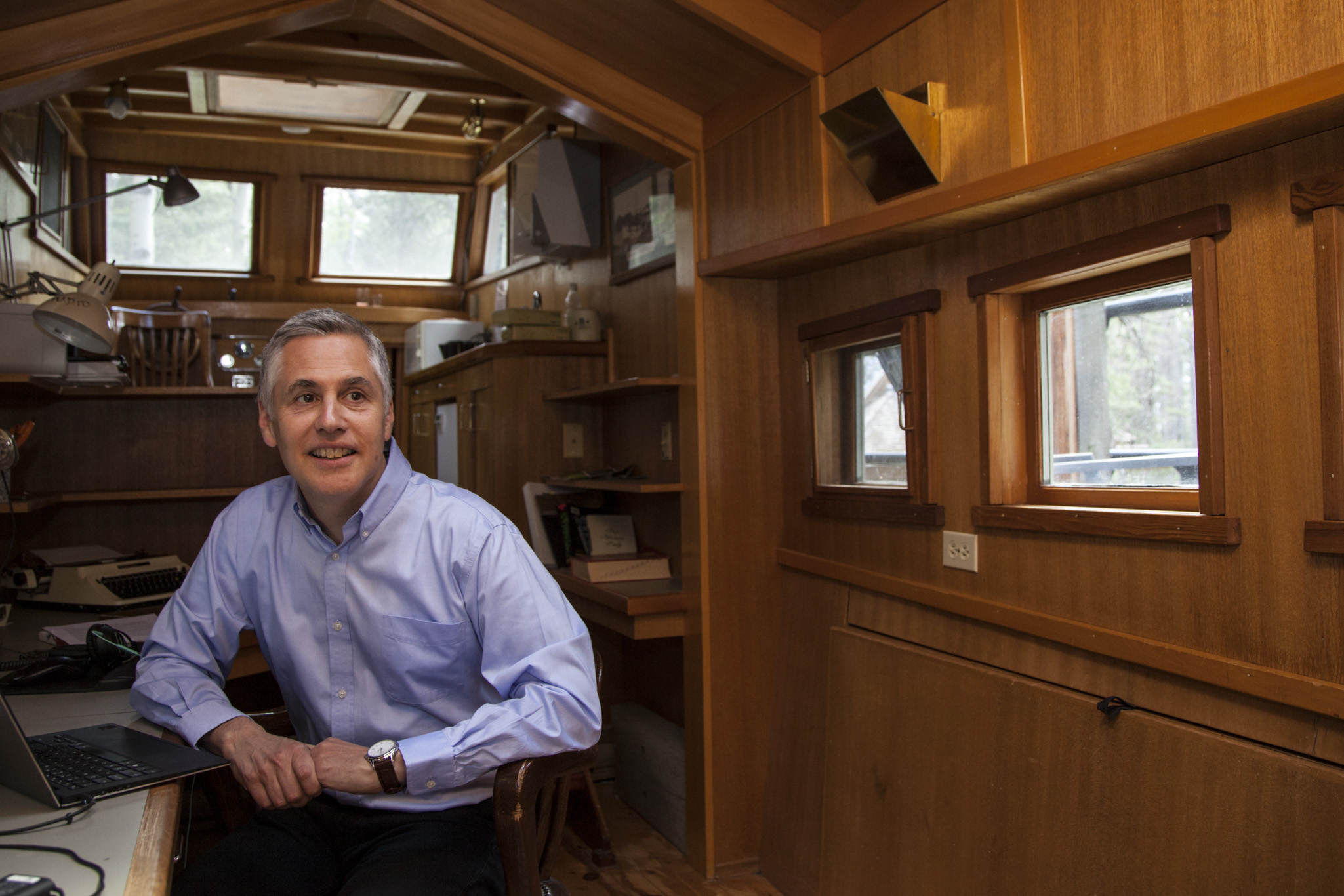Understanding Our Entanglements

John Borrows, Nexen Chair in Indigenous Leadership at Banff Centre, in the Leighton Artists' Colony.
John Borrows is living the legacy of Tecumseh.
The professor at University of Victoria is the great-great-great-nephew of the Shawnee Chief and iconic Canadian folk hero who walked across North America to bring a message of unity and reconciliation. Borrows sees many parallels between his own life and that of his ancestor.
“Tecumseh was taking ideas from home and seeding them in other places, getting people’s views about them, and spreading those ideas,” says Borrows. “But then he would, of course, learn in all these other places, and he would bring those ideas back home.”
As a legal scholar and storyteller, Borrows travels to share the stories of his people, gathers information, and brings that knowledge home. “My life is actually replicating the life of my ancestors,” he says. “There’s an important part of that legacy that’s entangled with my life.”
Borrows believes that all of our lives are interwoven with the past—he calls this notion “entanglement” and it’s a concept that can help us better understand reconciliation. “To be alive is to be entangled in relationships not entirely of our own making,” says Borrows. “There are countless ways in which we are entangled that we have no control over, like being a descendent of Tecumseh, or experiencing the intergenerational trauma caused by residential schools. These entanglements impact us not only as individuals, but also as nations, peoples, and species, and present themselves in patterns.”
Borrows explains the importance of recognizing and re-weaving those patterns to participate in reconciliation. “Our way forward is what some people call syncretic, meaning you pull on the best of what’s available in all of the traditions, and you leave behind the things that have been harmful and hurtful. We leave behind residential schools, we leave behind forced assimilation, we leave behind notions that one group is superior to another group, but at the same time we move forward the teachings that are best from the various worlds interacting together. Reconciliation reveals opportunities for Indigenous and non-Indigenous Peoples by pulling on the best of what they have to offer.”
As the Nexen Chair in Indigenous Leadership at Banff Centre, Borrows draws on the Wise Practices model that considers context when sharing the successes of Indigenous communities. Using that model, Borrows and his research team will document and disseminate the experiences of three communities: the 27 coastal First Nations engaged in the Great Bear Rainforest Agreement in British Columbia, the Tahltan First Nation in their agreement with the Red Chris Mine, and the Chippewa of the Rama First Nation with their economic development projects.
Reconciliation reveals opportunities for Indigenous and non-Indigenous Peoples by pulling on the best of what they have to offer.
John Borrows, Nexen Chair in Indigenous Leadership
Borrows, who is Anishinaabe and a member of the Chippewa of the Nawash First Nation in Ontario, began thinking about entanglement as he listened to stories told by his Elders and carried those lessons when he went out on the land.
He often looks to patterns in the earth for a deeper understanding of the world; drawing these parallels is called Akinomaagewin, an Anishinaabe term that means “the earth is our teacher.” Akinomaagewin incites us to look to the natural world and draw analogies from it.
A smile comes over Borrows as he describes his reserve on the shores of Georgian Bay. “When you walk along those shores, you walk on ancient life. The reserve was physically created 440 million years ago, and there are all these fossils that are embedded in the shore. As you look up and see the limestone escarpments around you, you recognize you’re living in an ancient place, that you’re not the first to be there because under your feet is the evidence that we’re not alone.”
Borrows began to see the entire world as entangled, “When I walk through the forest and I see those webs, I recognize that things are connected together.”
Akinomaagewin teaches that, just as in nature, we can observe and experience the patterns of incremental change and of sudden drastic events in our own human systems. For instance, when it comes to reconciliation, Borrows reminds us that gradual change should not be underestimated. “The reality often is that it takes a lot of patience and a lot of people doing things in various sectors to bring about that change incrementally.”
On a recent trip to Nunavut, Borrows witnessed the old world and new beautifully woven together. After a day of dog sledding, snowmobiling, and enjoying a traditional meal in the warmth of a contemporary home, he felt surprised by the disintegration of past and present.
“There was an excitement knowing that we didn’t have to be either-or, past or present, that things could be folded together,” he said. “It really is fabulous to be in a place where you recognize that one thing doesn’t have to be considered ‘primitive’ and the other thing be considered ‘modern.’ In fact, you’re living in a contemporary setting, being nourished by all of those traditions.”
Borrows, who has been nourished by his own connection to Tecumseh, knows that entanglement and the connection to our past can strengthen us as individuals and as a people. He says, “As we move toward reconciliation, we must find ways to weave together the best from our past and present to create positive entanglements for the next generation.”